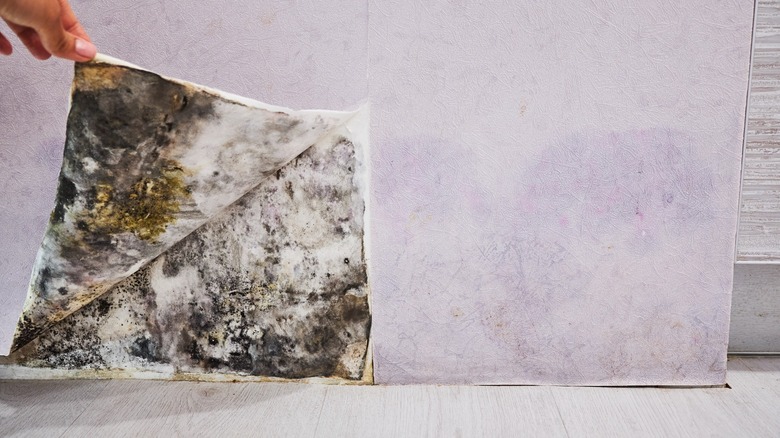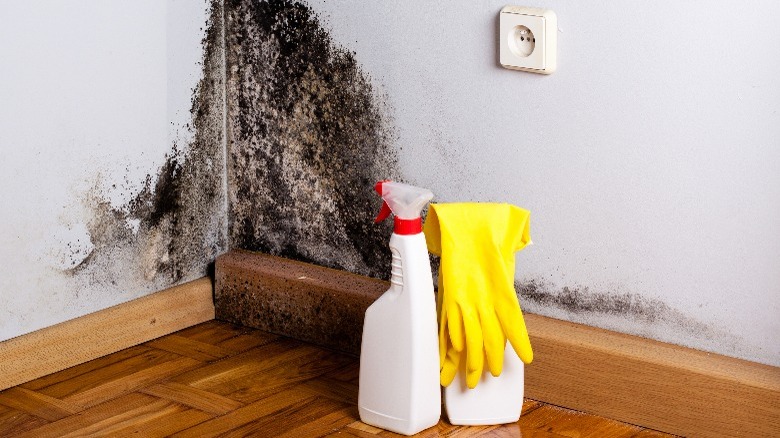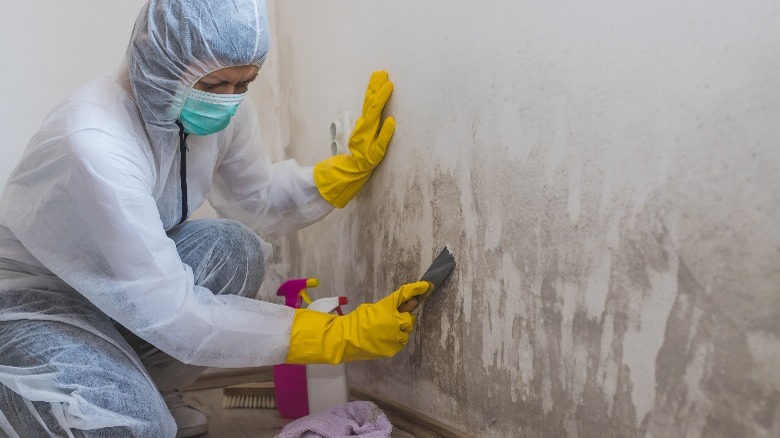How Vinegar Can Rescue Your Basement From Flood Damage
If you've ever had the unfortunate experience of a flooded basement, whether due to a major storm, a malfunctioning heater, or a plumbing mishap, you're well aware of the aftermath — the persistent musty smell and the unwelcome sight of mold growth. However, there's a ray of hope in your kitchen cupboard: vinegar. This common household ingredient can be a lifesaver when mitigating flood damage in your basement, particularly in getting rid of molds.
Vinegar is a solution that contains 5 to 8% acetic acid, a moderately strong acid that gives vinegar its antibacterial and anti-fungal properties. It is said to be able to kill 82% of known mold species.
Aside from being unsightly, molds can pose health risks, like triggering asthma attacks and causing other respiratory problems, so you need to get rid of them quickly. Mold can begin to grow within 24 to 48 hours following a flood in your basement. Once it finds this wet environment and organic matter to feed on, you'll be surprised at how quickly it can take over your basement.
How to clean a flooded basement with vinegar
The first step to cleaning a flooded basement is to remove floodwaters and repair any leaks. Once the source of the water is dealt with, open doors and windows to improve ventilation. If the area is humid, turn on a fan or run a dehumidifier to remove the excess moisture from the air. Depending on their condition and the water source that caused the damage, you can either dry affected items or toss them for sanitary and health reasons.
Before tackling the mold, put on gloves, a mask, and goggles for protection. Then, fill a spray bottle with undiluted vinegar and spray it generously onto the moldy areas. Allow it to sit for at least an hour, ensuring the mold fully absorbs the vinegar. Use a cleaning brush or sponge to gently scrub the area and remove the mold.
If you encounter particularly stubborn patches, mix 2 cups of water with a teaspoon of baking soda and use this solution for additional scrubbing power. Once you've finished scrubbing, make sure to dry the area thoroughly. And don't worry about the strong vinegar smell — it will dissipate in a few hours.
When vinegar is not enough
When using vinegar to combat mold, it's important to know what kind of vinegar is best for killing molds. Vinegar with sugar content, like apple cider, isn't as effective as distilled and cleaning vinegars. A 2015 study also found that while vinegar with 4 to 4.2% acetic acid is effective in treating Penicillium chrysogenum, it wasn't effective in killing Aspergillus fumigatus. Both these are the most common types of molds that can grow in a home.
You can use vinegar on drywall, leather, and non-porous surfaces like sinks and walls. It shouldn't be used on cast iron, aluminum, stainless steel, natural stone, and wood surfaces. While vinegars are great at treating molds on surfaces, they can't treat airborne spores. You may need professional help to deal with these and manage the molds' cause.
While you can generally handle the cleaning and treating small mold patches, it's essential to know when to tap a professional for help. The Environmental Protection Agency (EPA) advises homeowners to hire professional cleaners if the affected area is larger than 10 square feet.


